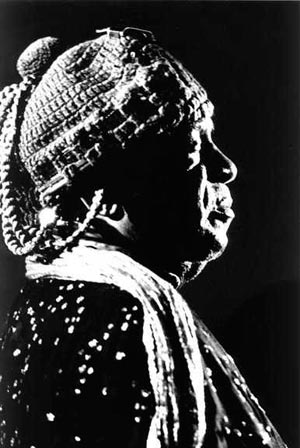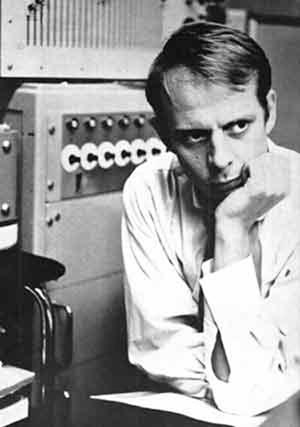| In a clever bit of programming, Andrew Timma spoke about the astrologist Julie Simmons whose work can be found on the Internet. Simmons knew nothing about Sun Ra or his music, but based on the information received at the time, she came up with several startling findings. Simmons found Ra to be exceedingly eccentric, a Gemini with Saturn in the centre of Gemini. She also found Ra to be a very brilliant person who saw himself as a visitor to earth.
It turned out that some of the symposium's six speakers knew the music of Sun Ra but not Stockhausen, while others had heard of Stockhausen, but little or no Sun Ra. It was like that for the audience, too.
Carl Wilson cited Stockhausen's opera "Licht" for its freedom from constraint (musical, political and social); then he advanced the big idea that Stockhausen's introduction of synthesizers into the acoustical tradition of European art music was a step into a future which was changing into the inorganic. In the case of Sun Ra and his Arkestra members, with their Egyptian costumes and symbols — dressed in a kind of futuristic imagery — Wilson pointed out that they looked like a blend of present and past. Futuristic imagery was like that. Otherwise, he said, you could say Sun Ra was against White Supremacy, and was non-Christian in his spiritual beliefs, but was equally critical of Blackness.
Stockhausen's own unique concept of space — or 'spatialization' as it came to be known — actually materialized in the form of the 1970 "Spherical Concert Hall", as Andrew Timma explained. Stockhausen's listening space was shaped like one of Buckminster Fuller's geodesic domes and had the audience seated in the centre. Timma went on to talk about Sun Ra's space, which is mystical and, above all, 'outside' social and earthly norms. If you're 'outside', then you've got a hold on your own territory, Timma said. You've got a space as place. ("If you find earth boring, it's the same old story ... "Space is the place" — Sun Ra)
Percussionist Aiyun Huang next spoke about Stockhausen and noted that his music is largely played today in academic circles and she'd be performing Stockhausen's "Kontakte" (1958-1960) for piano, percussion and electronics on Sunday at the Music Gallery. She's performed "Kontakte" before. Then one of the speakers asked Aiyun whether Stockhausen accepted the performer's input. Yes, she said, there are places in "Kontakte", with the tape, where the performer chooses when to come in — here was an 'interesting' facet, a glint, I thought, from Stockhausen's already very brilliant musical mind.
|
|

Sun Ra |
|

Karlheinz Stockhausen |
|



